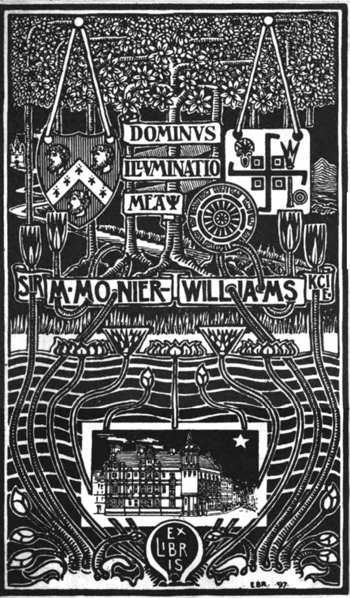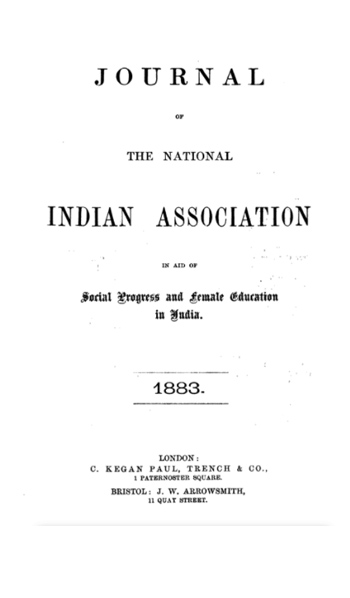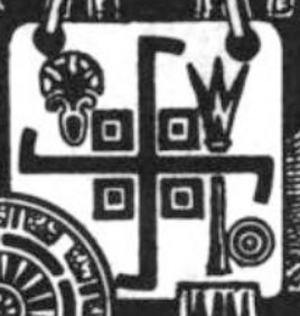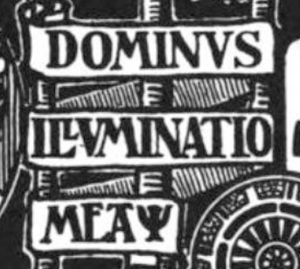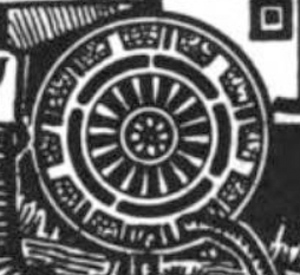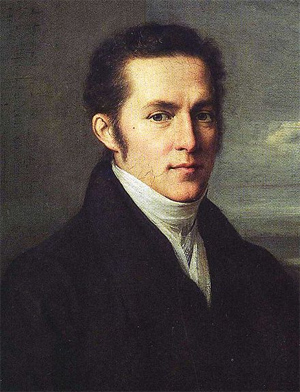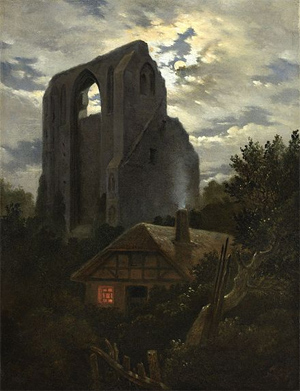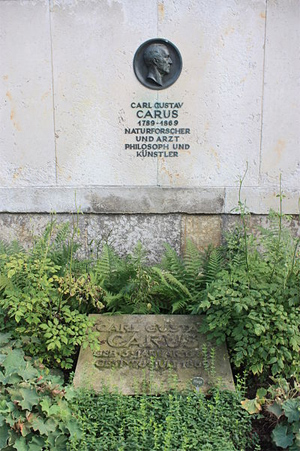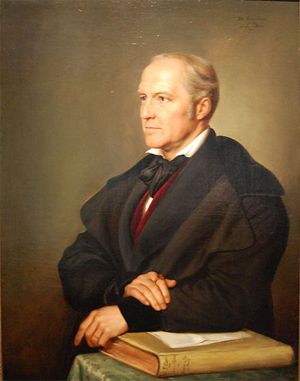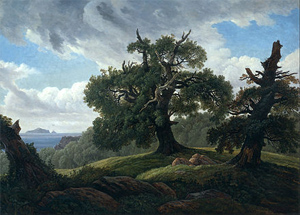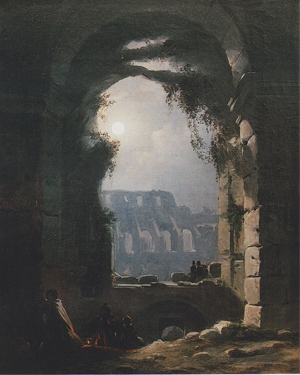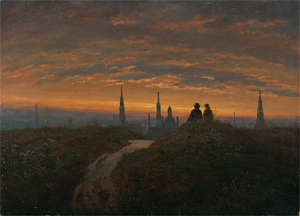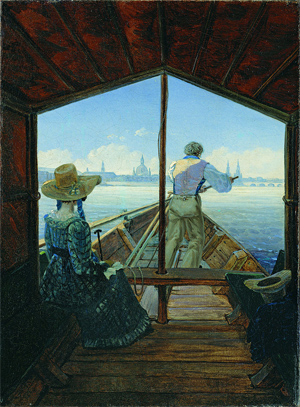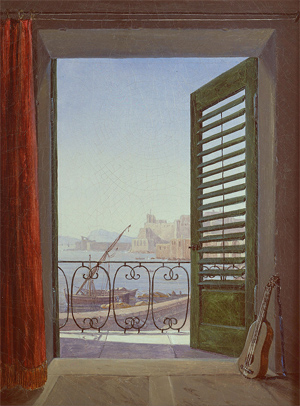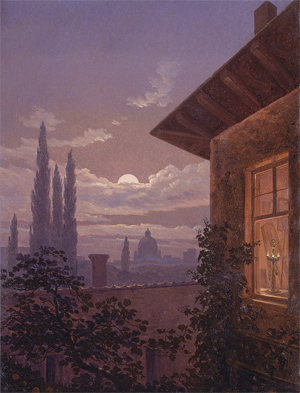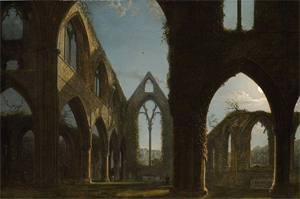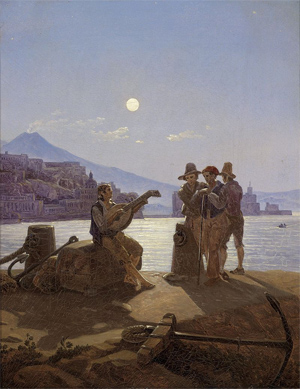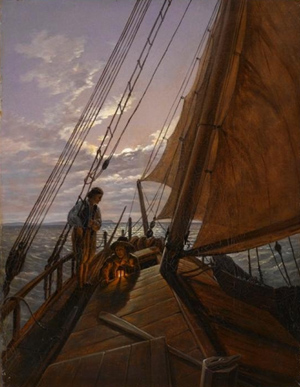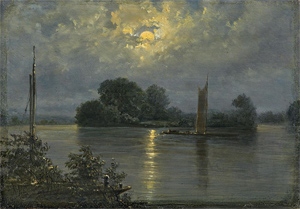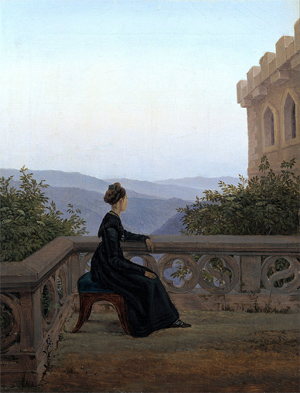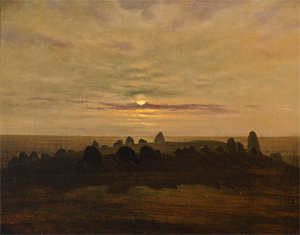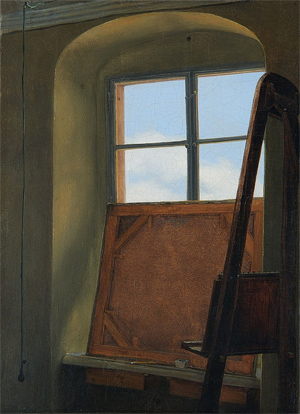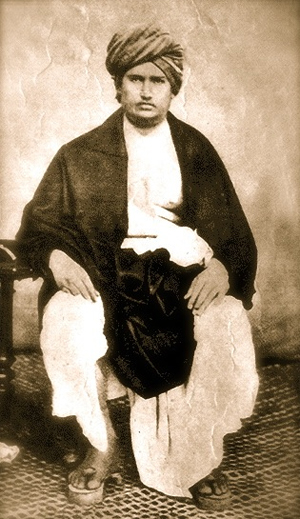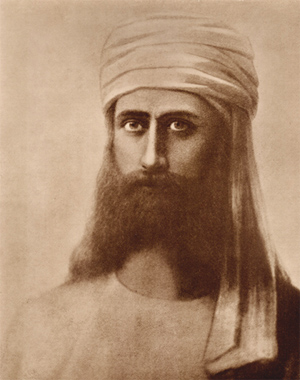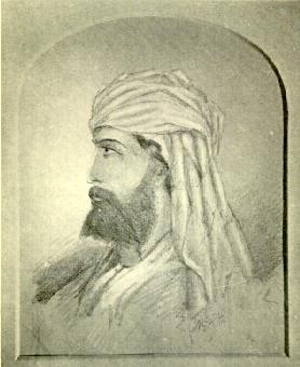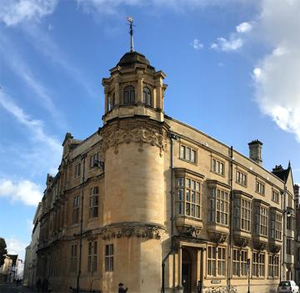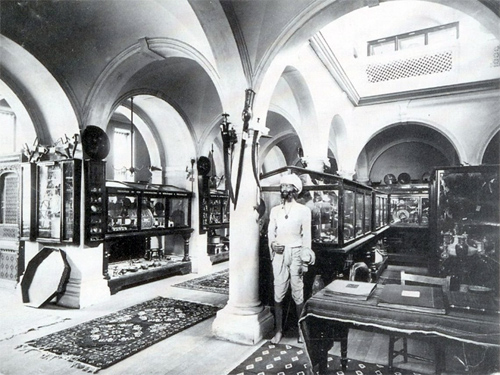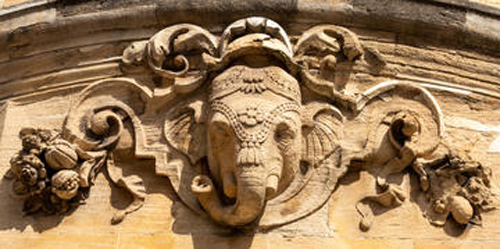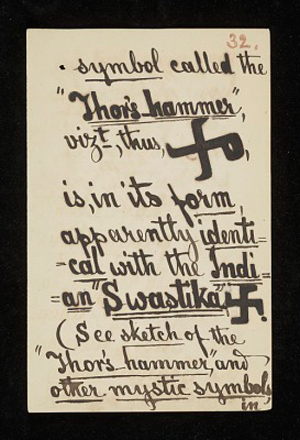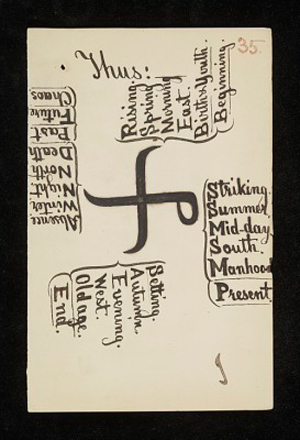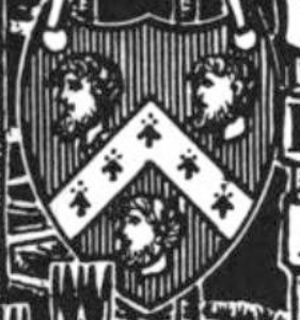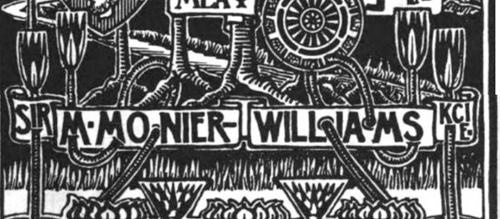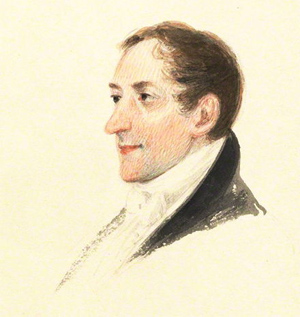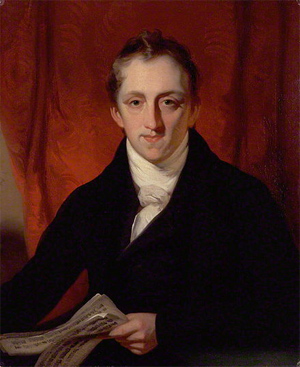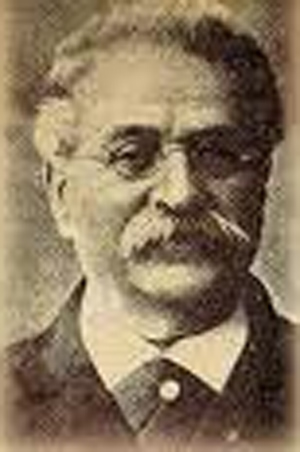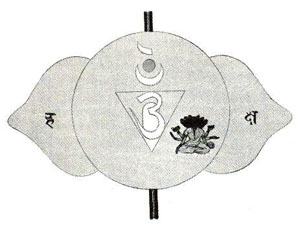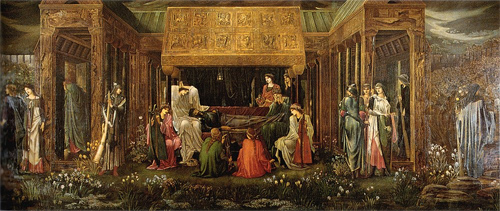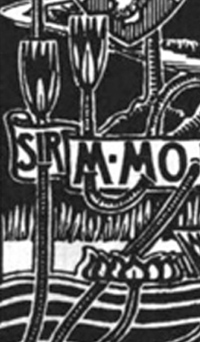by Wikipedia
Accessed: 3/20/21
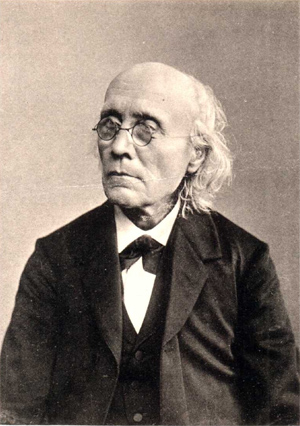
Gustav Fechner
Born: Gustav Theodor Fechner, 19 April 1801, Groß Särchen (near Muskau), Saxony, Holy Roman Empire
Died: 18 November 1887 (aged 86), Leipzig, Saxony, German Empire
Nationality: German
Education: Medizinische Akademie Carl Gustav Carus [de]
Leipzig University (PhD, 1835)
Known for: Weber–Fechner law
Scientific career
Fields: Experimental psychology
Institutions: Leipzig University
Thesis: De variis intensitatem vis Galvanicae metiendi methodis (1835)
Notable students: Hermann Lotze
Influences: Immanuel Kant
Influenced Gerardus Heymans; Wilhelm Wundt; William James; Alfred North Whitehead; Charles Hartshorne; Ernst Weber; Sigmund Freud; Friedrich Paulsen; Ludwig von Bertalanffy
Gustav Theodor Fechner (/ˈfɛxnər/; German: [ˈfɛçnɐ]; 19 April 1801 – 18 November 1887)[1] was a German experimental psychologist, philosopher, and physicist. An early pioneer in experimental psychology and founder of psychophysics, he inspired many 20th-century scientists and philosophers. He is also credited with demonstrating the non-linear relationship between psychological sensation and the physical intensity of a stimulus via the formula: {\displaystyle S=K\ln I}{\displaystyle S=K\ln I}, which became known as the Weber–Fechner law.[2][3]
Early life and scientific career
Fechner was born at Groß Särchen, near Muskau, in Lower Lusatia, where his father was a pastor. Despite being raised by his religious father, Fechner became an atheist in later life.[4] He was educated first at Sorau (now Żary in Western Poland).
In 1817 he studied medicine at the Medizinische Akademie Carl Gustav Carus [de] in Dresden and from 1818 at the University of Leipzig, the city in which he spent the rest of his life.[5] He earned his PhD from Leipzig in 1835.
In 1834 he was appointed professor of physics at Leipzig. But in 1839, he contracted an eye disorder while studying the phenomena of color and vision, and, after much suffering, resigned. Subsequently, recovering, he turned to the study of the mind and its relations with the body, giving public lectures on the subjects dealt with in his books. Whilst lying in bed, Fechner had an insight into the relationship between mental sensations and material sensations. This insight proved to be significant in the development of psychology as there was now a quantitative relationship between the mental and physical worlds.[6]
Contributions
Fechner published chemical and physical papers, and translated chemical works by Jean-Baptiste Biot and Louis Jacques Thénard from French. He also wrote several poems and humorous pieces, such as the Vergleichende Anatomie der Engel (1825), written under the pseudonym of "Dr. Mises."
Elemente der Psychophysik
Fechner's epoch-making work was his Elemente der Psychophysik (1860). He started from the monistic thought that bodily facts and conscious facts, though not reducible one to the other, are different sides of one reality. His originality lies in trying to discover an exact mathematical relation between them. The most famous outcome of his inquiries is the law known as the Weber–Fechner law which may be expressed as follows:
"In order that the intensity of a sensation may increase in arithmetical progression, the stimulus must increase in geometrical progression."
The law has been found to be immensely useful, but to fail for very faint and for very strong sensations. Within its useful range, Fechner's law is that sensation is a logarithmic function of physical intensity. S. S. Stevens pointed out that such a law does not account for the fact that perceived relationships among stimuli (e.g., papers coloured black, dark grey, grey, light grey, and white) are unchanged with changes in overall intensity (i.e., in the level of illumination of the papers). He proposed, in his famous 1961 paper entitled "To Honor Fechner and Repeal His Law", that intensity of stimulation is related to perception via a power-law.
Fechner's general formula for getting at the number of units in any sensation is S = c log R, where S stands for the sensation, R for the stimulus numerically estimated, and c for a constant that must be separately determined by experiment in each particular order of sensibility. Fechner's reasoning has been criticized on the grounds that although stimuli are composite, sensations are not. "Every sensation," says William James, "presents itself as an indivisible unit; and it is quite impossible to read any clear meaning into the notion that they are masses of units combined."
The Fechner color effect
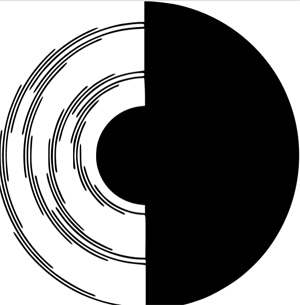
A sample of a Benham's disk
In 1838, he also studied the still-mysterious perceptual illusion of what is still called the Fechner color effect, whereby colors are seen in a moving pattern of black and white. The English journalist and amateur scientist Charles Benham, in 1894, enabled English-speakers to learn of the effect through the invention of the spinning top that bears his name, Benham's top. Whether Fechner and Benham ever actually met face to face for any reason is not known.
The median
In 1878, Fechner published a paper in which he developed the notion of the median. He later delved into experimental aesthetics and thought to determine the shapes and dimensions of aesthetically pleasing objects. He mainly used the sizes of paintings as his data base. In his 1876 Vorschule der Aesthetik, he used the method of extreme ranks for subjective judgements.[7]
Fechner is generally credited with introducing the median into the formal analysis of data.[8]
Synesthesia
In 1871, Fechner reported the first empirical survey of coloured letter photisms among 73 synesthetes.[9][10] His work was followed in the 1880s by that of Francis Galton.[11][12][13]
Corpus callosum split
One of Fechner's speculations about consciousness dealt with brain. During his time, it was known that the brain is bilaterally symmetrical and that there is a deep division between the two halves that are linked by a connecting band of fibers called the corpus callosum. Fechner speculated that if the corpus callosum were split, two separate streams of consciousness would result -- the mind would become two. Yet, Fechner believed that his theory would never be tested; he was incorrect. During the mid-twentieth century, Roger Sperry and Michael Gazzaniga worked on epileptic patients with sectioned corpus callosum and observed that Fechner's idea was correct.[14]
Golden section hypothesis
Fechner constructed ten rectangles with different ratios of width to length and asked numerous observers to choose the "best" and "worst" rectangle shape. He was concerned with the visual appeal of rectangles with different proportions. Participants were explicitly instructed to disregard any associations that they have with the rectangles, e.g. with objects of similar ratios. The rectangles chosen as "best" by the largest number of participants and as "worst" by the fewest participants had a ratio of 0.62 (21:34).[15] This ratio is known as the "golden section" (or golden ratio) and referred to the ratio of a rectangle's width to length that is most appealing to the eye. Carl Stumpf was a participant in this study.
However, there has been some ongoing dispute on the experiment itself, as the fact that Fechner deliberately discarded results of the study ill-fitting to his needs became known, with many mathematicians, including Mario Livio, refuting the result of the experiment.
The two-piece normal distribution
In his posthumously published Kollektivmasslehre (1897), Fechner introduced the Zweiseitige Gauss'sche Gesetz or two-piece normal distribution, to accommodate the asymmetries he had observed in empirical frequency distributions in many fields. The distribution has been independently rediscovered by several authors working in different fields.[16]
Fechner's paradox
In 1861, Fechner reported that if he looked at a light with a darkened piece of glass over one eye then closed that eye, the light appeared to become brighter, even though less light was coming into his eyes.[17] This phenomenon has come to be called Fechner's paradox.[18] It has been the subject of numerous research papers, including in the 2000s.[19] It occurs because the perceived brightness of the light with both eyes open is similar to the average brightness of each light viewed with one eye.[17]
Influence
Fechner, along with Wilhelm Wundt and Hermann von Helmholtz, is recognized as one of the founders of modern experimental psychology. His clearest contribution was the demonstration that because the mind was susceptible to measurement and mathematical treatment, psychology had the potential to become a quantified science. Theorists such as Immanuel Kant had long stated that this was impossible, and that therefore, a science of psychology was also impossible.
Though he had a vast influence on psychophysics, the actual disciples of his general philosophy were few. Ernst Mach was inspired by his work on psychophysics.[20] William James also admired his work: in 1904, he wrote an admiring introduction to the English translation of Fechner's Büchlein vom Leben nach dem Tode (Little Book of Life After Death). Furthermore, he influenced Sigmund Freud, who refers to Fechner when introducing the concept of psychic locality in his The Interpretation of Dreams that he illustrates with the microscope-metaphor.[21][22][23]
Fechner's world concept was highly animistic. He felt the thrill of life everywhere, in plants, earth, stars, the total universe. Man stands midway between the souls of plants and the souls of stars, who are angels.[24] God, the soul of the universe, must be conceived as having an existence analogous to men. Natural laws are just the modes of the unfolding of God's perfection. In his last work Fechner, aged but full of hope, contrasts this joyous "daylight view" of the world with the dead, dreary "night view" of materialism. Fechner's work in aesthetics is also important. He conducted experiments to show that certain abstract forms and proportions are naturally pleasing to our senses, and gave some new illustrations of the working of aesthetic association. Charles Hartshorne saw him as a predecessor on his and Alfred North Whitehead's philosophy and regretted that Fechner's philosophical work had been neglected for so long.[25]
Fechner's position in reference to predecessors and contemporaries is not very sharply defined. He was remotely a disciple of Schelling, learnt much from Baruch Spinoza, G. W. Leibniz, Johann Friedrich Herbart, Arthur Schopenhauer, and Christian Hermann Weisse, and decidedly rejected G. W. F. Hegel and the monadism of Rudolf Hermann Lotze.
Fechner's work continues to have an influence on modern science, inspiring continued exploration of human perceptual abilities by researchers such as Jan Koenderink, Farley Norman, David Heeger, and others.
Honours
Fechner Crater
In 1970, the International Astronomical Union named a crater on the far side of the moon after Fechner.[26]
Fechner Day
In 1985 the International Society for Psychophysics called its annual conference Fechner Day. The conference is now scheduled to include 22 October to allow psychophysicists to celebrate the anniversary of Fechner's waking up on that day in 1850 with a new approach into how to study the mind.[27] Fechner Day runs annually with the 2018 Fechner Day being the 34th.[28] It is organized annually, by a different academic host each year.[29][30]
Family and later life
Little is known of Fechner's later years, nor of the circumstances, cause, and manner of his death.
Fechner was the brother of painter Eduard Clemens Fechner and of Clementine Wieck Fechner, who was the stepmother of Clara Wieck when Clementine became her father Friedrich Wieck's second wife.
Works
• Praemissae ad theoriam organismi generalem ("Advances in the general theory of organisms") (1823).
• (Dr. Mises) Stapelia mixta (1824). Internet Archive (Harvard)
• Resultate der bis jetzt unternommenen Pflanzenanalysen ("Results of plant analyses undertaken to date") (1829). Internet Archive (Stanford)
• Maassbestimmungen über die galvanische Kette (1831).
• (Dr. Mises) Schutzmittel für die Cholera ("Protective equipment for cholera") (1832). Google (Harvard) — Google (UWisc)
• Repertorium der Experimentalphysik (1832). 3 volumes.
o Volume 1. Internet Archive (NYPL) — Internet Archive (Oxford)
o Volume 2. Internet Archive (NYPL) — Internet Archive (Oxford)
o Volume 3. Internet Archive (NYPL) — Internet Archive (Oxford)
• (ed.) Das Hauslexicon. Vollständiges Handbuch praktischer Lebenskenntnisse für alle Stände (1834–38). 8 volumes.
• Das Büchlein vom Leben nach dem Tode (1836). 6th ed., 1906. Internet Archive (Harvard) — Internet Archive (NYPL)
o (in English) On Life After Death (1882). Google (Oxford) — IA (UToronto) 2nd ed., 1906. Internet Archive (UMich) 3rd ed., 1914. IA (UIllinois)
o (in English) The Little Book of Life After Death (1904). IA (UToronto) 1905, Internet Archive (UCal) — IA (Ucal) — IA (UToronto)
• (Dr. Mises) Gedichte (1841). Internet Archive (Oxford)
• Ueber das höchste Gut ("Concerning the Highest Good") (1846). Internet Archive (Stanford)
• (Dr. Mises) Nanna oder über das Seelenleben der Pflanzen (1848). 2nd ed., 1899. 3rd ed., 1903. Internet Archive (UMich) 4th ed., 1908. Internet Archive (Harvard)
• Zend-Avesta oder über die Dinge des Himmels und des Jenseits (1851). 3 volumes. 3rd ed., 1906. Google (Harvard)
• Ueber die physikalische und philosophische Atomenlehre (1855). 2nd ed., 1864. Internet Archive (Stanford)
• Professor Schleiden und der Mond (1856). Google (UMich)
• Elemente der Psychophysik (1860). 2 volumes. Volume 1. Google (ULausanne) Volume 2. Internet Archive (NYPL)
• Ueber die Seelenfrage ("Concerning the Soul") (1861). Internet Archive (NYPL) — Internet Archive (UCal) — Internet Archive (UMich) 2nd ed., 1907. Google (Harvard)
• Die drei Motive und Gründe des Glaubens ("The three motives and reasons of faith") (1863). Google (Harvard) — Internet Archive (NYPL)
• Einige Ideen zur Schöpfungs- und Entwickelungsgeschichte der Organismen (1873). Internet Archive (UMich)
• (Dr. Mises) Kleine Schriften (1875). Internet Archive (UMich)
• Erinnerungen an die letzen Tage der Odlehre und ihres Urhebers (1876). Google (Harvard)
• Vorschule der Aesthetik (1876). 2 Volumes. Internet Archive (Harvard)
• In Sachen der Psychophysik (1877). Internet Archive (Stanford)
• Die Tagesansicht gegenüber der Nachtansicht (1879). Google (Oxford) 2nd ed., 1904. Internet Archive (Stanford)
• Revision der Hauptpuncte der Psychophysik (1882). Internet Archive (Harvard)
• Kollektivmasslehre (1897). Internet Archive (NYPL)
References
1. "Gustav Fechner - German psychologist and physicist". Encyclopedia Britannica. Retrieved 18 January 2019.
2. Fancher, R. E. (1996). Pioneers of Psychology (3rd ed.). New York: W. W. Norton & Company. ISBN 0-393-96994-0.
3. Sheynin, Oscar (2004), "Fechner as a statistician.", British Journal of Mathematical and Statistical Psychology (published May 2004), 57 (Pt 1), pp. 53–72, doi:10.1348/000711004849196, PMID 15171801
4. Michael Heidelberger (2004). "1: Life and Work". Nature from within: Gustav Theodor Fechner and his Psychophysical Worldview. University of Pittsburgh Press. p. 21. ISBN 9780822970774. The study of medicine also contributed to a loss of religious faith and to becoming atheist.
5. Fechner, Gustav Theodor at vlp.mpiwg-berlin.mpg.de.
6. Schultz, P.D., & Schultz, S.E. (2008). A History of Modern Psychology.(pp. 81-82).Thompson Wadsworth.
7. Michael Heidelberger. "Gustav Theodor Fechner". /statprob.com. Archived from the original on 4 March 2016. Retrieved 5 January 2014.
8. Keynes, John Maynard; A Treatise on Probability (1921), Pt II Ch XVII §5 (p 201).
9. Fechner, G. (1876) Vorschule der Aesthetik. Leipzig: Breitkopf und Hartel. Website: chuoft.pdf
10. Campen, Cretien van (1996). De verwarring der zintuigen. Artistieke en psychologische experimenten met synesthesie. Psychologie & Maatschappij, vol. 20, nr. 1, pp. 10–26.
11. Galton F (1880). "Visualized Numerals". Nature. 21 (543): 494–5. doi:10.1038/021494e0.
12. Galton F (1880). "Visualized Numerals". Nature. 21 (533): 252–6. doi:10.1038/021252a0.
13. Galton F. (1883). Inquiries into Human Faculty and Its Development. Macmillan. Retrieved 2008-06-17.
14. [Gazzinga, M.S (1970). The bisected brain. New York: Appleton-Century-Crofts]
15. Fechner, Gustav (1876). Vorschule der Ästhetik. Leipzig: Breitkopf & Härtel. pp. 190–202.
16. Wallis, K.F. (2014). "The two-piece normal, binormal, or double Gaussian distribution: its origin and rediscoveries". Statistical Science, Vol. 29, No. 1, pp.106-112. DOI: 10.1214/13-STS417 arXiv:1405.4995
17. Levelt, W. J. M. (1965). Binocular brightness averaging and contour information. British Journal of Psychology, 56, 1-13. https://dx.doi.org/10.1111/j.2044-8295.1965.tb00939.x
18. Robinson, T. R. (1896). Light intensity and depth perception. American Journal of Psychology, 7, 518-532. https://dx.doi.org/10.2307/1411847
19. Ding, J., & Levi, D. M. (2017). Binocular combination of luminance profiles. Journal of Vision, 17(13, 4), 1-32. https://dx.doi.org/10.1167/17.13.4
20. Pojman, Paul, "Ernst Mach", The Stanford Encyclopedia of Philosophy (Winter 2011 Edition), Edward N. Zalta (ed.) [1]
21. Nicholls, Angus; Liebshcher, Martin (24 June 2010). Thinking the Unconscious: Nineteenth-Century German Thought. Cambridge University Press. p. 272. ISBN 9780521897532.
22. Freud, Sigmund (18 March 2015). The Interpretation of Dreams. Translated by A. A. Brill. Mineola New York: Courier Dover Publications. p. 35. ISBN 978-0-486-78942-2.
23. Sulloway, Frank J. (1979). Freud: Biologist of the Mind.(pp. 66-67). Basic Books.
24. Marshall, M E (1969), "Gustav Fechner, Dr. Mises, and the comparative anatomy of angels.", Journal of the History of the Behavioral Sciences (published Jan 1969), 5(1), pp. 39–58, doi:10.1002/1520-6696(196901)5:1<39::AID-JHBS2300050105>3.0.CO;2-C, PMID 11610088
25. For Hartshorne's appreciation of Fechner see his Aquinas to Whitehead – Seven Centuries of Metafysics of Religion. Hartshorne also comments that William James failed to do justice to the theological aspects of Fechner's work. Hartshorne saw also resemblances with the work of Fechner's contemporary Jules Lequier. See also: Hartshorne – Reese (ed.) Philosophers speak of God.
26. Fechner, Gazetteer of Planetary Nomenclature, International Astronomical Union (IAU) Working Group for Planetary System Nomenclature (WGPSN)
27. Kreuger, L. E. (1993) Personal Communication. ref History of Psychology 4th edition David Hothersal 2004 ISBN 9780072849653
28. http://www.ispsychophysics.org/fd2018/
29. "FECHNER DAY 2018". fechnerdays Webseite!. Retrieved 18 January 2019.
30. "Fechner Day 2017 — Welcome (index)". fechnerday.com. Retrieved 18 January2019.
Further reading
• Heidelberger, M. (2001), "Gustav Theodor Fechner" in Statisticians of the Centuries (ed. C. C. Heyde and E. Seneta) pp. 142–147. New York: Springer Verlag, 2001.
• Heidelberger, M. (2004), Nature From Within: Gustav Theodor Fechner and his Psychophysical Worldview (trans. Cynthia Klohr), Pittsburgh, PA: University of Pittsburgh Press, 2004. ISBN 0-822-9421-00
• Robinson, David K. (2010), "Gustav Fechner: 150 years of Elemente der Psychophysik", in History of Psychology, Vol 13(4), Nov 2010, pp. 409–410. [2]
• Stigler, Stephen M. (1986), The History of Statistics: The Measurement of Uncertainty before 1900, Cambridge, MA: Harvard University Press, pp. 242–254.
External links
• Works by Gustav Theodor Fechner at Project Gutenberg
• Works by or about Gustav Fechner at Internet Archive
• William James on Fechner
• Works of Gustav Theodor Fechner at Projekt Gutenberg-DE. (German)
• Excerpt from Elements of Psychophysics from the Classics in the History of Psychology website.
• Robert H. Wozniak's Introduction to Elemente der Psychophysik.
• Biography, bibliography and digitized sources in the Virtual Laboratory of the Max Planck Institute for the History of Science
• Granville Stanley 1912 'Founders of modern psychology p. 125ff archive.org
• Gustav Theodor Fechner 1904 The Little Book of Life after Death Foreword by William James
• Gustav Theodor Fechner 1908 The Living Word
• Gustav Theodor Fechner at statprob.com
**************************
Gustav Theodor Fechner
by Theosophy Wiki
Accessed: 3/20/21
Gustav Theodor Fechner (April 19, 1801 – November 18, 1887), was a German experimental psychologist interested in Spiritualism.
Mahatama Letters reference
Gustav Theodor Fechner may have been the "G. H. Fechner" mentioned by Master K.H. in one of his letters:
I may answer you, what I said to G. H. Fechner one day, when he wanted to know the Hindu view on what he had written — "You are right; . . . 'every diamond, every crystal, every plant and star has its own individual soul, besides man and animal . . .' and, 'there is a hierarchy of souls from the lowest forms of matter up to the World Soul' . . ."[1]
Fechner's world concept was highly animistic. He felt the thrill of life everywhere, in plants, earth, stars, the total universe. Man stands midway between the souls of plants and the souls of stars, who are angels. God, the soul of the universe, must be conceived as having an existence analogous to men. Natural laws are just the modes of the unfolding of God's perfection. In his last work Fechner, aged but full of hope, contrasts this joyous "daylight view" of the world with the dead, dreary "night view" of materialism. Fechner's work in aesthetics is also important. He conducted experiments to show that certain abstract forms and proportions are naturally pleasing to our senses, and gave some new illustrations of the working of aesthetic association. Charles Hartshorne saw him as a predecessor on his and Alfred North Whitehead's philosophy and regretted that Fechner's philosophical work had been neglected for so long.
-- Gustav Fechner, by Wikipedia
The ideas quoted in this Letter had been reported in the The N.Y. Nation, as follows:
He endeavors to make out that every diamond, every crystal, every plant, planet, and star has its own individual soul, besides man and animals; that there is a hierarchy of souls from the lowest forms of matter up to the world-soul -- a sort of eclectic, semi-pantheistic nondescript; and that the spirits of the departed hold psychic communication with souls that are still connected with a human frame.[2]
When Prof. Fechner was asked about having met a Hindu at Leipzig, he said he did, although clarified that the name of the Hindu concerned was Nisi Kanta Chattopadhyaya, not Koot Hoomi. Some Theosophists thought this was a pseudonym used by Master K.H. However, this was not the case, according to Charles J. Ryan in an article published in The Canadian Theosophist[3]
An Important Correction
by Charles J. Ryan
[Reprinted from The Canadian Theosophist, December 15, 1936, pp. 326-329.]
Editor, Canadian Theosophist: - May I draw attention to one or two points in regard to Mr. H. R. W. Cox’s excellent defence of H.P.B. against the most recent attack. The first deals with a statement in your August number.
On pages 173-4 Mr. Cox discusses the problem of the Hindu who met a certain scholar named Fechner, and quotes Mr. Basil Crump’s Evolution. The main points are these: In The Mahatma Letters, p. 44, the Master K.H. mentions a conversation he had "one day" with a certain "G. H. Fechner", but does not say when or where it took place. Mr. Crump, in Evolution, informs us that C. C. Massey, once a leading Theosophist, received information from Leipzig that a Professor Fechner, living there, remembered having met a Hindu at some unnamed period and having heard him lecture. The Hindu also visited Professor Fechner. The Professor said that the name of the Hindu was Nisi Kanta Chattapadhyaya, and that he was not particularly conspicuous. Mr. Massey seems to have thought that he had, in this way, received independent evidence of the presence of the Master K.H. at Leipzig in the earlier ‘seventies, for he explains the reason that Professor Fechner did not know the name Koot Hoomi by a very reasonable supposition, viz.:"In case it may be wondered why he [the Master K.H.] used a different name, it may be mentioned that when members of this Order have to travel in the outer world they always do so incognito."
Mr. Cox appears to agree with Massey, or he would not quote the above remark in his defence of H. P. Blavatsky against the Messrs. Hares’ charges.
Unfortunately Nisi Kanta Chattopadhyaya and the Master K.H. are two different persons, and the argument is therefore not valid, useful as it would be if confirmed. The former was a well-known Hindu gentleman, Principal of the Hyderabad College and author of sundry interesting works on Oriental, philosophical, and other subjects. He was evidently interested in Theosophy, for he presented Katherine Tingley, when she was in Bombay in 1896, with an autograph copy of one of his books, now in the Oriental Department of the Theosophical Library at Point Loma, California.
The first article or chapter in this book is called "The Reminiscences of the German University Life," and it is a report of a lecture by Dr. N. K. Chattopadhyaya on April 30, 1892 at Secunderabad. In this chapter he says:"I once met Prof. Gustav Fechner, the author of a book called "Psycho-Physik" in which he has enunciated certain laws whose importance . . . . is as great as Newton’s Law of Gravitation . . . . I had the privilege of escorting the old sage home and on the way he asked quite a number of questions about the Yogis and the Fakirs of India . . . Seeing more of him by and by I came to discover that he was quite a mystic, and had actually written a book called the "Zend-Avesta" a masterly exposition of Vedantic pantheism in the light of modern science."
The "Sage" was, of course, the famous Gustav Theodor Fechner.
Turning to The Mahatma Letters, we find that the Master’s conversation "one day" was held with a certain G. H. Fechner, and, as mentioned above, it was not connected with Leipzig. Question: was the Master K.H. referring to some unknown Fechner whose initials were G. H. and not G. T. and who has not been identified? That seems highly improbable. Is it more likely that the H. is a mere slip of the pen or even a typographical error, and that the Master really referred to the eminent philosopher, with whom he had a short conversation, probably so short that it had been quite forgotten by G. T. Fechner, who only recollected N. K. Chattopadhyaya.
However this may be, Professor Gustav T. Fechner’s message to C. C. Massey cannot be used as if it related to the Master K.H., because the Professor definitely states that his Hindu was Chattopadhyaya, and the latter positively confirms the fact. We have learned from other sources that the Master spent some time in Germany, but I am not aware that Leipzig is mentioned in Theosophical literature in that connection. In the Sinnett letters, H. P. Blavatsky says:". . . Wurzburg. It is near Heidelberg and Nurenberg, and all the centres one of the Masters lived in, and it is He who advised my Master to send me there. . ." (p. 105)
My second point relates to what the Hare Brothers call the "notable admission" by H. P. Blavatsky in connection with alleged Mahatma letters sent by her to importunate claimants for advice on their personal, worldly affairs - not connected with Theosophy....
Charles J. Ryan.
General Offices, Theosophical Society,
Point Loma, California.
See also Koot Hoomi: Education in Europe for more about Fechner.
Review by William James
William James wrote an insightful article about the philosophy of G. T. Fechner, entitled "The Doctrine of the Earth-Soul and of Beings Intermediate Between Man and God." [The Doctrine of the Earth-Soul and of Beings intermediate between Man and God, by William James, Hibbert Journal 7:278 (1908)] This review of the article appeared in The Theosophic Messenger in 1909:
An account of the philosophy of G. T. Fechner... outlines Fechner's standing as a scientist, and introduces him also in his lesser-known role of a transcendental philosopher. Fechner reckoned our habit of regarding the spiritual not as a rule but as an exception in the midst of Nature, the original sin of both popular and scientific thought. He himself consistently maintained the opposite view, supporting it by a wonderful number and variety of analogies, with the fundamental conclusion that the constitution of the world is the same throughout, and that as we conceive the consciousness of the individual, so we must conceive a consciousness of a higher and higher order in an indefinite series. The supposition of an earth consciousness he seeks to maintain by reviewing the characteristic marks of superiority which we have been in the habit of associating with the consciousness of man, and by pointing out, through analogy, the entire propriety of assuming these in still more perfect degree as part of the earth-soul: independent of other external beings is no less characteristic of the earth than of the human individual; complexity in unity, in the case of the earth, exceeds that of any other organism; development from within is no less its characteristic mode than that of man himself; while in individuality of type and indifference from other beings of its type, the earth is extraordinarily distinct. Fechner continues a most brilliant handling of this subject through several different volumes, from all of which Professor James has taken the most illuminating extracts, all making, however, for this one conclusion, namely, the criticism that ordinary transcendentalism of the more modern type leaves everything intermediary out. Where Fechner saw unlimited gradations in consciousness, "it recognizes only the extremes, as if after the first rude face of the phenomenal world in all its particularity, nothing but the supreme in all its perfection could be found. First, you and I, just as we are in our places; and the moment we get below that surface, the unutterable Absolute itself! Doesn't this show a singularly indigent imagination? Isn't this brave universe made on a richer pattern, with room in it for a long hierarchy of beings? Materialistic science makes it infinitely richer in terms, with its molecules and aether, and electrons, and what not. Absolute idealism, thinking of reality only under intellectual forms, know not what to do with bodies of any grade, and can make no use of any psychophysical analogy or correspondence. The resultant thinness is startling when compared with the thickness and articulation of such a universe as Fechner paints. * * * [sic] One of my reasons for printing this article has been to make the thinness of current transcendentalism appear more evident by an effect of contrast. Scholasticism ran thick; Hegel himself ran thick; but English and American transcendentalism run thin. If philosophy is more a matter of passionate vision than of logic -- and I believe it is, logic only finding reasons for the vision afterwards -- must not such thinness come, either from the vision being defective in the disciples, or from their passion, matched with Fechner's or with Hegel's own passion, being as moonlight unto sunlight or as water unto wine?"[4]
Writings
On Life After Death. Chicago: The Open Court Publishing Company, 1917. 3rd edition.
Additional resources
• James, William. "The Doctrine of the Earth-Soul and of Beings Intermediate Between Man and God." Hibbert Journal VII (January, 1909), 278.
1. Theosophy Wiki Mahatma Letter No. 18, pages 13-14.
2. The N. Y. Nation, Oct. 2, 1879, p. 229.
3. Charles J. Ryan, "An Important Correction" The Canadian Theosophist (December 15, 1936), 326-329. See also Cox's work, Who Wrote the March-Hare Attack on the Mahatma Letters? Victoria, British Columbia, Canada: H.P.B. Library, 1936, reprinted here at the Blavatsky Archives website.
4. "Current Literature" The Theosophic Messenger 10.6 (March, 1909), 259-260. Review of article by William James, "The Doctrine of the Earth-Soul and of Beings Intermediate Between Man and God" Hibbert Journal VII (January, 1909), 278. See Internet Archive for Hibbert Journal VII.

